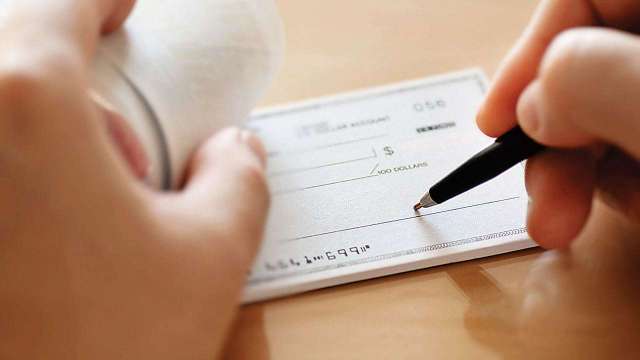
Cheque Truncation System (CTS) or Image-based Clearing System (ICS), in India, is a project undertaken by the Reserve Bank of India – RBI, for faster clearing of cheques. CTS is basically an online image-based cheque clearing system where cheque images and Magnetic Ink Character Recognition (MICR) data are captured at the collecting bank branch and transmitted electronically.
Truncation means, stopping the flow of the physical cheques issued by a drawer to the drawee branch. The physical instrument is truncated at some point en route to the drawee branch and an electronic image of the cheque is sent to the drawee branch along with the relevant information like the MICR fields, date of presentation, presenting banks etc.
Cheque truncation, would eliminate the need to move the physical instruments across branches, except in exceptional circumstances. This would result in effective reduction in the time required for payment of cheques, the associated cost of transit and delays in processing, etc., thus speeding up the process of collection or realization of cheques.

 🕑 02 Jul, 2025 10:03 AM
🕑 02 Jul, 2025 10:03 AM
Commutation Relief In Sight? Panel Likely To Review 15-Year Deduction Rule
 🕑 12 Jun, 2025 08:12 AM
🕑 12 Jun, 2025 08:12 AM
8th Pay Commission: Uncertainty Looms as Employees Await Terms of Reference
 🕑 24 Apr, 2025 10:21 PM
🕑 24 Apr, 2025 10:21 PM
Staff Side constitutes panel for drafting memorandum to 8th CPC when formed
 🕑 24 Apr, 2025 10:17 PM
🕑 24 Apr, 2025 10:17 PM
8th Pay Commission likely to be set up by mid May
 🕑 09 Apr, 2025 10:27 AM
🕑 09 Apr, 2025 10:27 AM
Loan EMIs to get Cheaper as RBI cuts Repo Rate sgain | See the benefit
 🕑 04 Apr, 2025 04:49 PM
🕑 04 Apr, 2025 04:49 PM
AICPI-IW declines again, may affect DA hike in July 2025
 🕑 09 Jun, 2025 08:25 AM
🕑 09 Jun, 2025 08:25 AM
📢 UPS vs NPS: The Retirement Dilemma Facing 27 Lakh Government Employees
 🕑 04 Apr, 2025 04:46 PM
🕑 04 Apr, 2025 04:46 PM
NPS To UPS Switch from April 1: A Detailed Look at the Option to Switch
 🕑 30 Mar, 2025 11:01 AM
🕑 30 Mar, 2025 11:01 AM
8th Pay Commission implementation may get delayed till 2027 – Here’s why
 🕑 27 Mar, 2025 10:25 PM
🕑 27 Mar, 2025 10:25 PM
7th CPC wanted a permanent pay panel, end DA revision twice
 🕑 27 Mar, 2025 08:43 AM
🕑 27 Mar, 2025 08:43 AM
8th Pay Commission: What Kind Of Salary Hike Can Be Staff Expected?
 🕑 20 Mar, 2025 08:24 AM
🕑 20 Mar, 2025 08:24 AM
Why the commuted pension is restored after 15 years, not 12 years
 🕑 17 Mar, 2025 08:37 AM
🕑 17 Mar, 2025 08:37 AM
📈 Expected Dearness Allowance (DA) from January 2026 Calculator